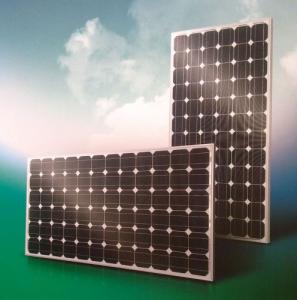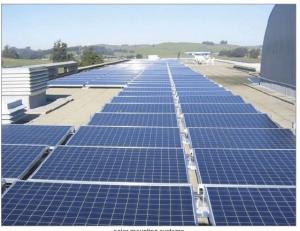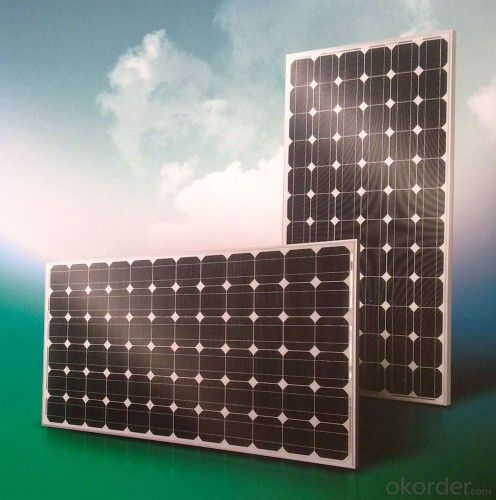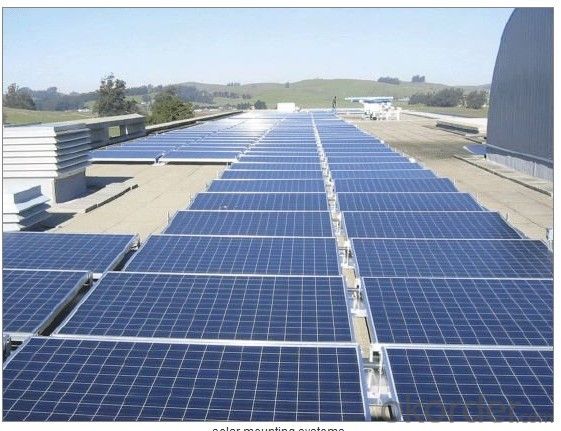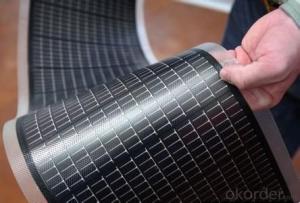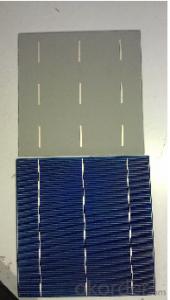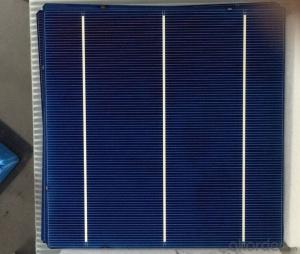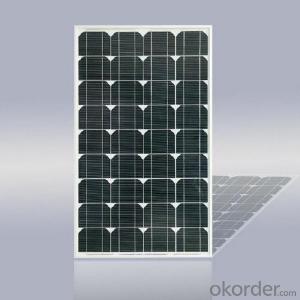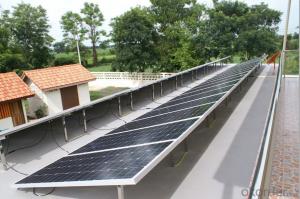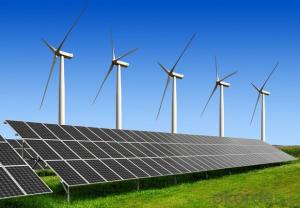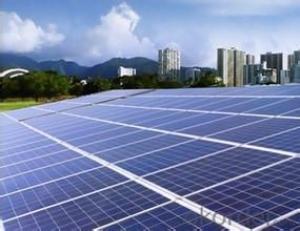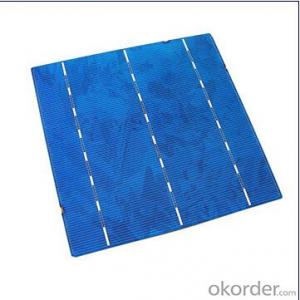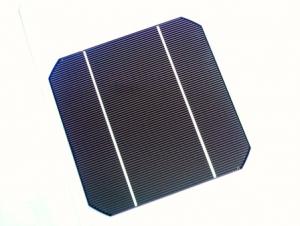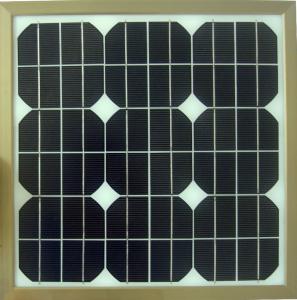Solar Cells for Space Applications:A Grade High Efficiency Solar Panel from China
- Loading Port:
- China main port
- Payment Terms:
- TT or LC
- Min Order Qty:
- 1 m.t.
- Supply Capability:
- 100000000000 m.t./month
OKorder Service Pledge
OKorder Financial Service
You Might Also Like
Quick Details
CNBM Solar is a world-leading and Vertical integrated manufacturer of high-performance with Silicon,
Wafer, Cells, Modules, which convert sunlight into electricity for residential, commercial, and utility-scale
power generation.
The capacity of CNBMSolar is reach to 1GW, and make sure each year our shipment capacity is more
Than 700-800MWs, at the same time, we have set up the largest solar power station with our partner
in Ukraine.
CNBM is a Quality + Service oriented company with“Excellence at Each Step” approach, composed of
the finest components from TUV and IEC-certified partners around the world, CNBM modules consistently
undergo a variety of trials at the company’s Test & Development Centre, ensuring peak performance
capabilities. The company is committed to develop and provide the world with clean and renewable energy
to ease the energy shortages as well as human kind’s impact on the environment.
Specifications
A-grade cell high efficiency 5W-300W PV solar panel
1.Higher conversion efficiency
2.quick delivery
3.Excellent in quality
Technical Parameter:
Good Quality 185W Solar Panel | |
Peak Power-Pmax(W) | 185W |
Open Circuit Voltage-Voc(V) | 44.2 |
Maximum Power Voltage-Vmp(V) | 36 |
Short Circuit Current-Isc(A) | 5.4 |
Maximum Power Current-Imp(A) | 5 |
Maximum System Voltage | 1000V DC |
Maximum Series Fuse Rating | 10A |
Power Tolerance | -1~+3% |
Temperature Coefficients of Pmax | -0.45%/℃ |
Temperature Coefficients of Voc | -0.348%/℃ |
Temperature Coefficients of Isc | 0.031%/℃ |
Nominal Operating Cell Temperature | 44.5±2℃ |
Standard Testing Condition(STC) | Irradiance:1000W/m²;Temperature:25℃;AM=1.5 |
Qualification Test Parameters | |
Operating Temperature | -40℃~+85℃ |
Storage Temperature | -40℃~+85℃ |
Pressure Bearing | ≥5400Pascal/m² |
Wind Bearing | ≥5400Pascal/m² |
Mechanical Characteristics | |
Cell Size | Mono 125*125mm±0.5 |
No.of Cells | 72pcs(6*12) |
Dimension | 1580*808*40mm |
Weight | 15.5Kg |
Glass | 3.2mm High Transmission,Low Iron |
Frame | Anodized Aluminum Alloy |
Junction Box | IP65Rated |
Internal Diodes | 3 Bypass Diodes |
Cable | 1*4.0mm² Length 900mm |
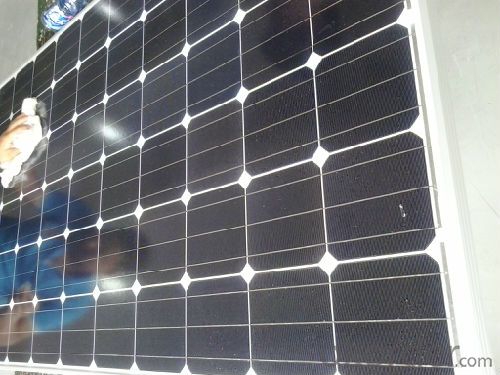
More Details-Photovoltaic, PV
Photovoltaic cells or panels are thin layers of semi-conducting material. Electrical charges are generated. When exposed to sunlight, they produce electricity which is fed into the domestic supply as direct current. A number of cells connected together behind glass form a solar panel.Solar panel refers either to a solar hot water panel, a common type of a solar thermal collector, or to one or more solar photovoltaics (PV) modules, electrically connected and mounted on a supporting structure.A PV module is a packaged, connected assembly of typically 6×10 solar cells. Solar PV panels constitute the solar array of a photovoltaic system that generates and supplies solar electricity in commercial and residential applications. Each module is rated by its DC output power under standard test conditions, and typically ranges from 100 to 320 watts. The efficiency of a module determines the area of a module given the same rated output – an 8% efficient 230 watt module will have twice the area of a 16% efficient 230 watt module. There are a few solar panels available that are exceeding 19% efficiency. A single solar module can produce only a limited amount of power; most installations contain multiple modules. A photovoltaic system typically includes a panel or an array of solar modules, an inverter, and sometimes a battery and/or solar tracker and interconnection wiring.

FAQ:What's your product warranty ?>
12 yrs free from defects in materials and workmanship;No less than 90% within 10yrs and no less than 80% within 25yrs
- Q: Can solar cells be used in developing countries?
- Yes, solar cells can be used in developing countries. In fact, they are increasingly being used as a cost-effective and sustainable solution to address the energy needs of these countries. Solar cells provide access to electricity in remote areas where traditional grid infrastructure is unavailable or unreliable. They can power homes, schools, healthcare centers, and other essential services, improving living conditions and fostering economic development. Additionally, solar energy is abundant and renewable, reducing dependence on fossil fuels and mitigating climate change impacts.
- Q: Can solar cells be used in disaster relief or emergency response situations?
- Yes, solar cells can be used in disaster relief or emergency response situations. They provide a reliable and sustainable source of power, especially in areas where the traditional electricity grid may be damaged or inaccessible. Solar cells can be used to generate electricity to power essential equipment, communication systems, and medical devices, ensuring effective response and aid delivery in emergency situations. Additionally, their portability and quick installation make them ideal for rapid deployment and temporary power supply in disaster-stricken areas.
- Q: How do solar cells impact water resources?
- Solar cells do not directly impact water resources as they generate electricity from sunlight, which does not require water. However, the production and manufacturing processes of solar cells may require water, but it is relatively minimal compared to other forms of energy generation like fossil fuels or nuclear power.
- Q: What are the advantages of monocrystalline silicon and polycrystalline silicon in solar power?
- polysilicon, ribbon silicon, thin film materials (including microcrystalline silicon-based film, compound-based film and dye film). From the industrial development point of view, the focus from the single crystal to the direction of the development of polysilicon and film, the main reason: [1] solar head can supply more and less head and tail; [2] for solar cells, (3 hours) The production process of polysilicon is progressing continuously. The automatic casting furnace can produce more than 200 kilograms of ingot per production cycle (50 hours),
- Q: Where can I get a competitive price for this solar cell? The 2bb/3bb polycrystalline solar cell panel?
- Here is some detailed information of our 2bb/3bb polycrystalline solar cell panel: High conversion efficiencies resulting in superior power output performance.
- Q: Can solar cells be used for powering schools?
- Yes, solar cells can be used for powering schools. Solar panels can be installed on rooftops or in open spaces near the school to capture sunlight and convert it into electricity. This renewable energy source can help meet the energy needs of schools, reducing their reliance on fossil fuels and lowering their carbon footprint. Additionally, solar power can provide a reliable and cost-effective source of electricity for schools, allowing them to save on energy expenses in the long run.
- Q: My solar cells are broken, can I just buy one and replace it?
- It's a bit risky to do that by yourself.
- Q: Can solar cells be used in water heating systems?
- Yes, solar cells can be used in water heating systems. Solar water heating systems use solar thermal collectors, which consist of solar cells that convert sunlight into electricity. This electricity is then used to heat water, making it a sustainable and environmentally friendly option for water heating.
- Q: What is the average lifespan of a solar cell in space?
- The average lifespan of a solar cell in space can vary depending on various factors such as the quality of the materials used, the level of radiation exposure, and the overall design of the solar cell. However, on average, solar cells in space can last anywhere between 10 to 25 years.
- Q: Where can I get the most accurate information about solar cells?
- The library is always the best place to go.
Send your message to us
Solar Cells for Space Applications:A Grade High Efficiency Solar Panel from China
- Loading Port:
- China main port
- Payment Terms:
- TT or LC
- Min Order Qty:
- 1 m.t.
- Supply Capability:
- 100000000000 m.t./month
OKorder Service Pledge
OKorder Financial Service
Similar products
Hot products
Hot Searches
Related keywords
